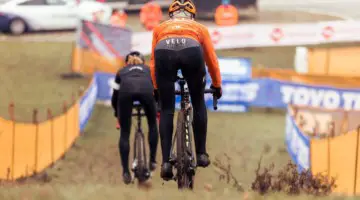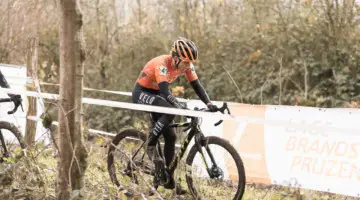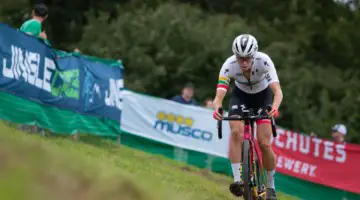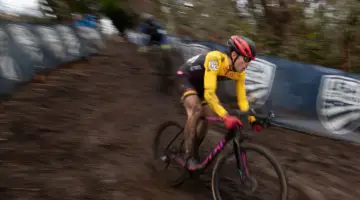#crossiscoming, and if you are like us, you are starting to think about your pre-cyclocross-season training. Last week, we asked a panel of coaches for their advice on intensity versus duration, running and taking a break. This week, our coaches are back for Ask the Coaches Part II that focuses on skills and in-season body maintenance.
For more training, tech and race-related content to get you ready for the 2018/19 cyclocross season, see our full #crossiscoming series.
Our coaches for this Ask the Coaches are:
Brandon Davis. Brandon is the owner of Wattage Cottage Coaching in Wilmington, North Carolina. For the past several years, Brandon worked as a mechanic for the Aspire Racing team, which we spoke to him about earlier this year. Brandon has also contributed his coaching and mechanical expertise in the past.
Chris Mayhew. Coach Chris Mayhew likely needs no introduction for Cyclocross Magazine readers. The JBV Coaching coach has contributed Training Tuesday pieces for the past few years and has also written pieces addressing technical issues as well.
Joe Maloney. Joe is a new contributor to Cyclocross Magazine. Joe lives in Pullman, Washington, where he runs his coaching business JM Coaching. We have seen him before on ’cross podiums at the Chicago Cross Cup, and he also has a series of training videos available online.
Ask the Coaches: Pre-Cyclocross-Season Training, Part II
Cyclocross Magazine: We covered ideas for working on technical skills earlier this year. Do you have an outside-the-box drills you think help with bike handling?
Brandon Davis: Absolutely! But I can’t give all the secrets away. *laughs*
Chris Mayhew: I’m not sure what defines outside-the-box. Any time you can push your limits, go for it. Road bikes on trails, ’cross bikes on trails, drills with cones. Anything with friends to get some friendly competition going.
Joe Maloney: Hands down my favorite thing to do as an athlete is find a park (where I’m allowed to ride) and create my own little course, ride around and shred it as fast as I can. It’s basically a cyclocross practice, but when there isn’t one in your area. I also encourage my athletes to hit some singletrack on their cyclocross bikes on recovery days or even during workout cool-downs. If you can find ways to challenge your handling skills often, it goes a long way. I think specific drills are great because they target specific issues, but there is also a place for free-form practice. unstructured play time.
As for more structured skills and drills, think about your races and your riding and try to identify course features or situations that intimidate you, where you find you’re losing time or where you feel awkward. You can also think about what the next race will look like and pick a feature that the race will include. On your skills days, try to simulate the features and practice them 5 to 10 times each.
Let’s say it’s longer hill runs, off-camber corners and steep descents. For the hill, you’d obviously need to find a hill to run. Practice riding into it, dismounting and running, remounting and hitting the gas hard for five seconds or to the closet tree at the top. Practice coming into it at high and low speeds, five times each. For the off-camber corners, find a side hill and bring some cones. Set the cones up so they make a set of switch backs going up the hill, forcing you to make the difficult off-camber corners going up. Practice going up and down five times each. For steep descents, you could use either of the two hills, put a corner on the hill or not, but practice going down it. The specific drill isn’t always as important; there isn’t any magic I’ve found.
What more important is being thoughtful about your body, balance and movements. Be critical of yourself and identify where you solidly planted, where were you unstable, where you felt awkward and where you slipped. Then when you’re riding home or cooling down, focus on what you learned and what you can improve on next week.
CXM: It can also be hard to find places to work on riding cyclocross. Do have any spots that have worked for you or clients?
CM: Yeah, cyclocross venues are hard to find. Any time you can get in the dirt or gravel or what have you, do it. And do it on the bike least optimal for it. Or ride with file treads. Anything that gets you on your limit faster is better.
Be creative too. We, locally, do a lot with a 90-second grass loop and some flags. And I’ve seen places with world-class venues that don’t use nearly what they could of the terrain. Find what you have locally and figure out how to make the best of it.
JM: A pretty common place seems to be the areas around soccer (football, sorry) fields when no one is playing or a pickup game is going on. Since they usually don’t manage the grass off the field, it’s usually rougher, which makes the workouts harder. You can do all kinds of fun workouts using the various sides for sprinting, resting, running, resting and repeat.
However, it is important to be respectful of your local community and venues. Ask others where they ride in your area. At best, you’ll have a great place to ride that the local community is okay with, and at the very worst, it will limit the impact and upset as few people as possible if cyclocrossers are practicing at the same spot.
BD: We have a bunch of cool parks near my house here in North Carolina. One of my more recent favorites is an abandoned golf course!
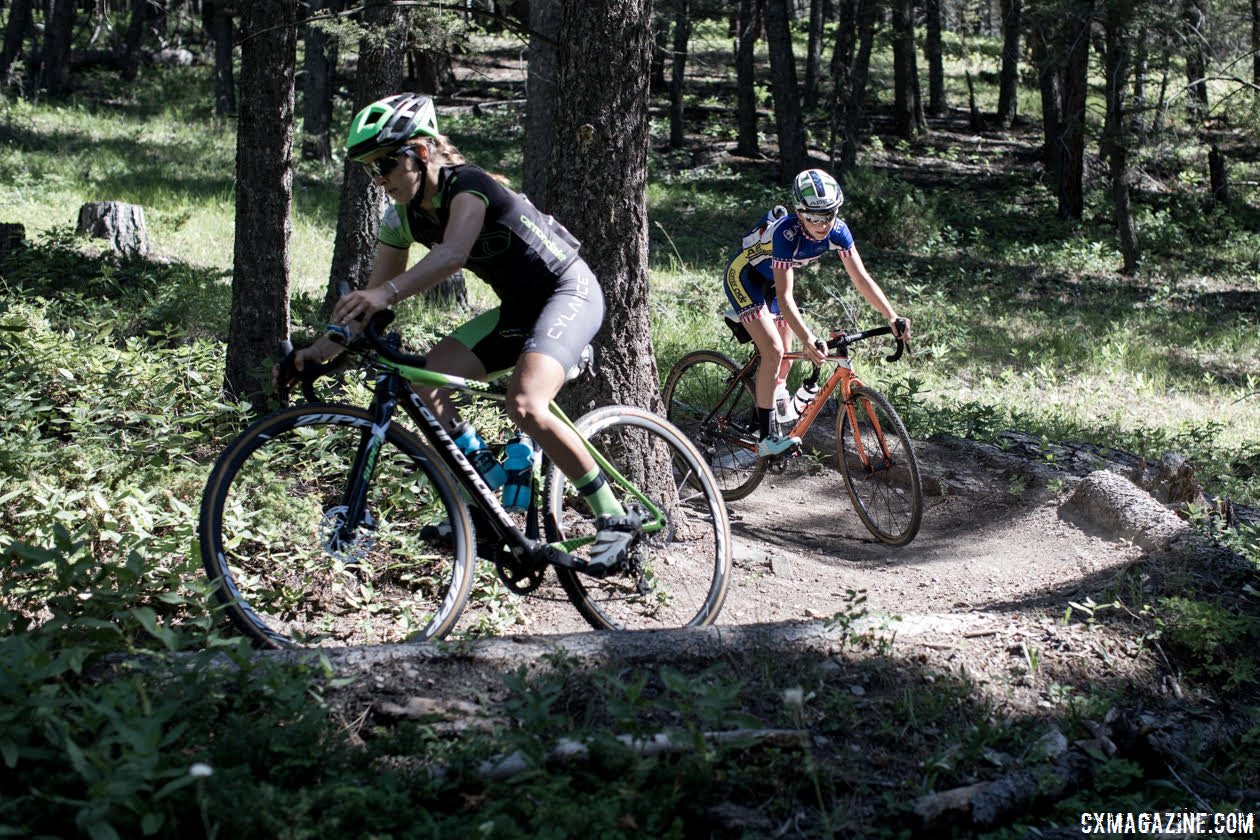
Riding singletrack can help you develop technical skills. Montana Cross Camp, Women, 2017. © Tom Robertson
CXM: If you decide to do a ’cross clinic, how do you advise getting the most out of the experience?
JM: When doing a clinic, make a point of making some friends. Not only are clinics good places to practice, but they are great for networking and getting a new riding group. It’s also good to ask questions about how you might do the drills at home. It’s pretty tough to get good at something practicing it 5-10 times.
Clinics can help provide useful info and ideas, and hopefully, the coach can identify some specific things you need to work on. But, you need to practice the skills at home to nail them.
BD: Listen and ask questions. Engage the teacher or coach to get those knowledge nuggets.
CM: WHAT DO YOU MEAN IF?
Come in with an open mind and a willingness to (think you) look dumb. So many people don’t want to embarrass themselves or look like they don’t know what they’re doing. To quote Tim Kennedy, “fail faster.” The quicker you get to the edge your abilities the more I can teach you and the more you can learn. If you do everything perfectly at a clinic both of us will be bored.
Ask questions. You’re not the only one with that question.
Maybe bring a pad and pen? I can barely remember everything I need to say and I’ve done about 100 clinics. If you can remember everything I said that’s impressive. But, I should also start handing out a syllabus so that some of what I say is already written down. There’s always room for growth!
CXM: Research seems to suggest static stretching is a performance detriment before a workout or race, but what are your thoughts on post-race or post-workout stretching?
BD: Post-race, absolutely. There’s loads of science behind this. But, dynamic stretching is better. Some examples include walking lunges, leg swings and jumping jacks. You get the idea. If you do a proper warm-up, doing some of these before the race is okay as well.
CM: Studies show that static stretches of over a minute decrease muscle contraction strength for about an hour. So yes, a yoga class before your race is sub-optimal. (maybe)
I think long-duration stretches absolutely have a place in a post-workout environment. Doing stretches of two to four minutes—the duration needed to make physical changes, not just loosen up—to decrease tension in historically tight places for cyclists (quads, hip flexors) will allow you to produce more power, have less pain on and off the bike and make you a more well-rounded human.
(I also think if you want to do some short stretches before a race, go crazy.)
JM: I have come to fully embrace dynamic warm-ups both as an athlete and now as a coach. An athlete wants long yet dense muscles. Static stretching is a long-term activity that will tend to lengthen your muscles over time, but it also tends to make them less dense in the short-term.
Dynamic warm-ups help warm your muscles up and give you full range of motion without causing the loss of density. It’s common for people to believe they can improve flexibility by stretching before an event, but flexibility and long muscles take time to gain. Think weeks not hours.
Dynamic stretching looks pretty weird, but it works. As for cool-downs, the best time to stretch is after a good 10-20 minute cool down ride. This is also the place for static stretching. But most people are either too tired, too rushed or too forgetful to stretch right after their cool-down. A suitable alternative is to get in the habit of stretching before bed or when you wake up, or even after your post-ride shower. It more about the consistency than the timing.
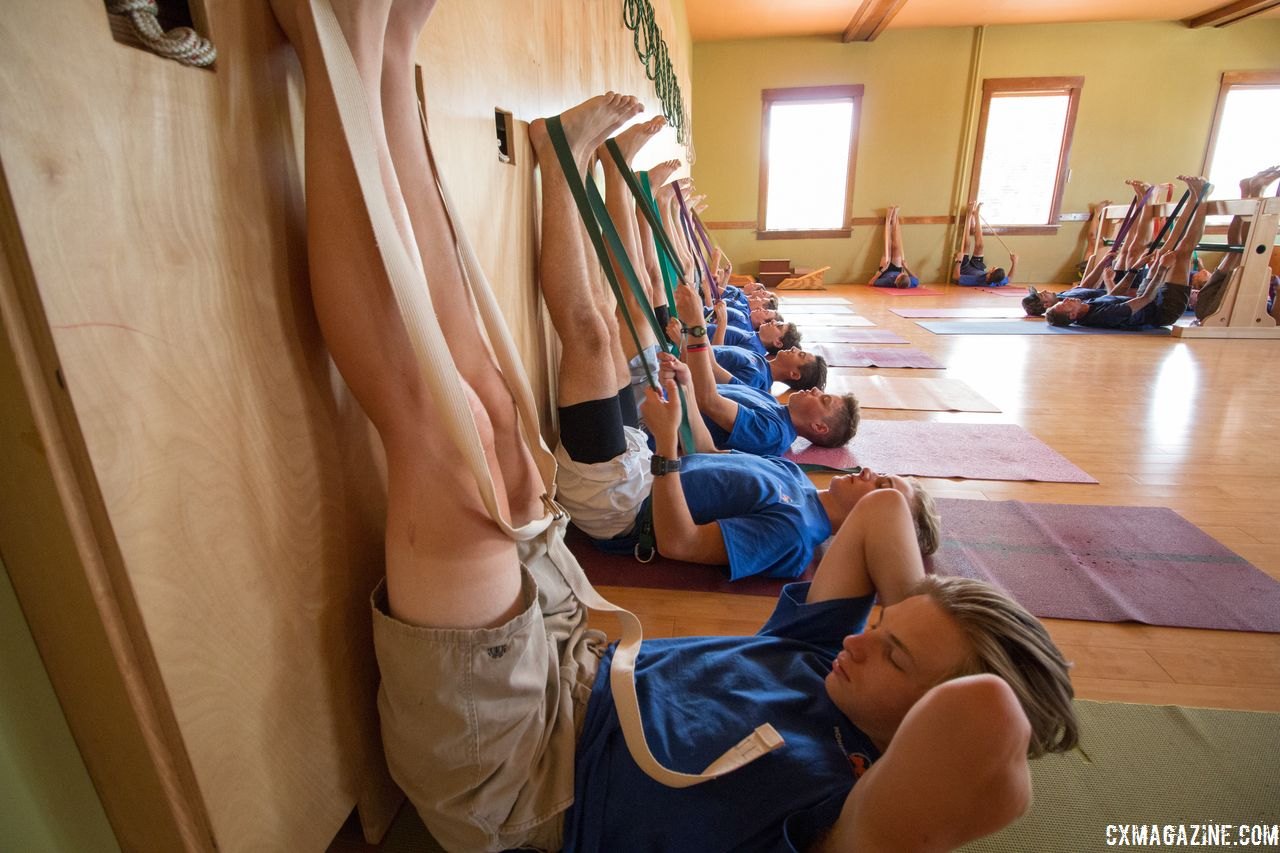
Stretching has its place for cyclists, according to our coaches. 2017 Montana Cross Camp moments. © Cyclocross Magazine
CXM: Most of us time-crunched weekend warriors struggle to find time for recovery rides. Are these essential to squeeze in or can we forgive ourselves for skipping them most weeks?
CM: I think they’re probably the first thing that can go. If you have easy access to a short, easy loop you can ride in your little ring that’s great. I did a million miles in Seneca Park in Louisville that way. Here in Pittsburgh, I don’t have anything like that.
Getting the blood flowing is great, but there are other ways to do that. Short walks, yoga, etc. Asking someone to sit on the trainer for a short easy ride is burning a lot of motivation for very little use. That said, if you have rollers, 15 minutes on them would be awesome. If you don’t know how to ride rollers, I really recommend learning how!
I would also add people seem to have no idea how to execute these. Little ring only, easy and short. To quote Brandon Davis, “If you can drop your five-year-old you’re going too hard.”
JM: The truth is that these recovery rides are important, but they won’t end your season if you miss one or two—or even 30% of them. But the other truth is that often 30 minutes is enough, and for me, they are a great time to stop and think, clear my head and relax. And I think training or not, time to think makes me and most people better people. It’s not much time, and it’s worth it for many reasons.
Having said all that, don’t get too hard on yourself for missing a couple. Also, commuting counts! If you can ride to and from work, make a point to keep it short or super-easy if you have a longer commute. Those count as recovery rides, and they provide a great way to clear your head before and after work.
BD: They do have value, but if you are missing work or your kid’s soccer game to ride, skip it. Very few of us are lucky to get paid to race cyclocross (if you’re reading this then it’s likely you are not one of those lucky ones), so find that balance with life and the bike. However,t if your child’s soccer team wins, you might be trading your recovery ride for all-you-can-eat pizza and ice cream. It’s a slippery slope *laughs*.
That said, discipline leads to success. If you can fit it in, it will definitely help to fit those recovery spins into your schedule.
CXM: Thank you for the great advice.
For more training advice, see our Training Tuesday archives.























